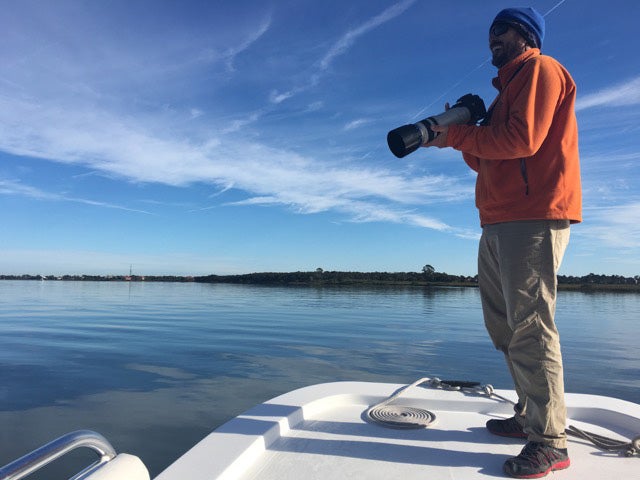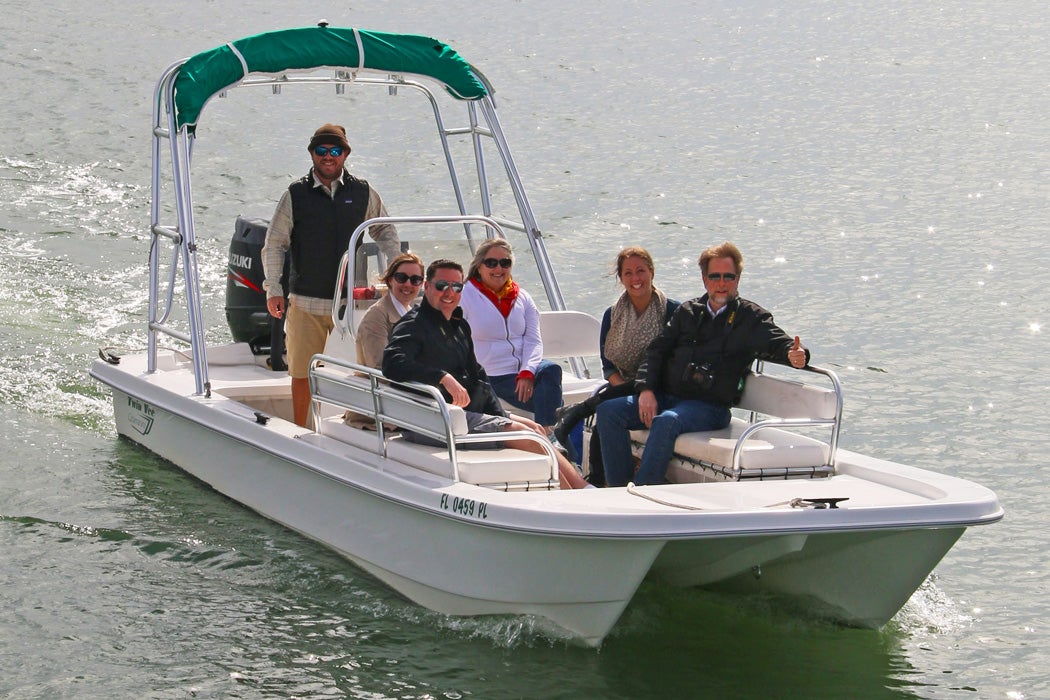Welcome to JSTOR Daily’s Planet-Conscious Weekly Summer Travel Series! From electric cruise ships to biofuel-powered jets, from agritourism to sustainable ways of interacting with wildlife, we will investigate better, more sustainable ways to travel and interact with the world.
The History of Eco-Tours
Human interest in watching and interacting with wildlife has grown in the latter half of the twentieth century. Public perception of marine attraction parks and aquariums has shifted; more and more people see marine mammals kept in concrete tanks or using them in human warfare as unethical and inhumane. The Marine Mammal Protection Act (MMPA), which passed in 1972, recognized the plight of captive marine mammals, and aimed to safeguard their role in the ocean ecosystems. Instead of watching these animals in artificial settings, people started wanting to observe them in their natural environment.
That contributed to the rapid growth of tour companies. The earliest reports of dolphin-watching companies in Florida, North Carolina, South Carolina, and Texas date back to the 1970s, but at the time, they were still rare and few. In 1983, only four commercial dolphin-watching companies were operating in the Southeastern United States. Ten years later, this number grew to twenty-five. By the early 2000s, there were over one hundred dolphin-watching companies in Florida alone and some of them ran forty-eight hours’ worth of tours a day, seven days a week in summer, totaling 4,416 tours during the summer months. Some of these tour companies operated nearly year-round. Not all of them were pursuing animal sightings in a responsible manner.
Weekly Newsletter
Early tour operators fed dolphins to bring them closer to the boats and facilitate the sightings. In many cases, dolphins became comfortable accepting food from humans. The National Marine Fisheries Service banned this practice in 1991, as it proved unhealthy for the animals. Sometimes the food dolphins received was harmful for them, and at times these feedings resulted in accidental boat strikes.
A Boat Captain’s Perspective
Zach McKenna, a boat captain and owner of St. Augustine Eco Tours in Florida, believes that human feeding causes dolphins psychological harm as well. They forgo their natural hunting habits, forage less and instead go the easy route—chasing boats. “To me, it’s almost like an addiction,” he says. “In my observations, eventually these dolphins get sick and die, because fish from humans isn’t going to supplement their natural requirements.” Moreover, McKenna believes that dolphins that become habituated by humans may face isolation within their pods—the social communities in which they live.

McKenna grew up on Hilton Head Island, a coastal community of South Carolina, where he fell in love with the ocean and marine life. He went to business school at Flagler College in St. Augustine, where he settled for good. In 2006, he launched his eco-tours company, aiming to educate people about the importance of the ocean ecosystems. He started small, with one boat and a couple of kayaks. Then he began working with the marine scientists at Flagler, providing them with vessels and captains able to take research crews out into the ocean to do their studies. Eventually, he got involved in the research himself—he helped conduct a photo identification study, which allowed the creation of a database of dolphins inhabiting certain parts of Florida’s waters. His work also helped identify dolphins’ favorite feeding spots, which he and his colleagues hope to see designated as protected areas one day. His fleet grew to a six- and a fourteen-passenger boat and kayaks that sail up to three times a day, manned by a staff of thirteen people altogether. “This year we took 12,000 people on our explorations,” McKenna says.
How to Make Sure Your Eco-Tour is Actually Eco-Conscious
When people ask McKenna whether he guarantees wildlife sighting, his answer is always “No.” Even though the waters where McKenna takes his visitors are brimming with life, there is no way to promise that tourists will definitely encounter marine creatures. Even if dolphin groups or manatees with calves have been feeding in the areas for a few days, he knows there’s no way to predict they will still be there the next day. Fish schools may shift, predators may arrive, storms may hit—all of which may make animals move on.
In fact, tour operators who guarantee wildlife sighting to their customers are likely to care less about the animals and more about their profits, according to McKenna. They may skirt the rules in order to get tourists the coveted sightings and photos—and keep the business going. They may approach the animals too closely, or venture into protected areas closed for boat traffic where newborn manatees are learning to swim or dolphin mothers take their young to feed.

“If you want to see the marine mammals in an ecologically conscious way without causing them harm or distress and with an operator who really cares, don’t ask him if he guarantees wildlife—this question drives conservationists crazy,” McKenna says. “Instead, ask how close the boat gets to the animals. In the Unites States, the Marine Mammal Protection Act sets this viewing distance at 150 feet.”
Once an animal is spotted, the viewing time can last up to thirty minutes. McKenna’s tour operators usually limit it to eight, however, because there’s no way to know how many boats the animals have already encountered, and every vessel adds more distraction to their normal feeding schedule and social interactions.
It’s also important to make sure an eco-tour boat isn’t extremely loud, or spitting out puffs of smoke and soot. “We spent a lot of time designing our boats to use fossil fuels efficiently and not be smoky, to minimize their carbon footprint,” McKenna says.
The boats also shouldn’t go that fast. McKenna’s boat captains follow a self-imposed speed limit of eighteen miles an hour while looking for wildlife in large deep waters, and slow down to five miles an hour in shallow channels in order to avoid accidentally striking the animals. But McKenna notes that not all boaters follow these rules. Some buzz around at sixty miles an hour, and dolphins sometimes ride the waves off their ships. It’s an engaging sight for tourists, but this practice is dangerous for dolphins because it puts them in close proximity to the vessel’s propeller. “I’ve been studying dolphins’ behavior for a long time,” McKenna says. “They make mistakes too. One dolphin can accidentally bump into another—and it hits the propeller.”
Hardly a week goes by without some kind of wildlife accident on the water, according to McKenna, who in addition to tours also responds to turtle and dolphins strikes. The calls, reported via Florida Wildlife Conservation Committee’s Hotline, are routed to the local biologists who reach out to McKenna because he or his staff is likely to be already on the water. As more people venture out on the bay, whether fishing or looking for animals, the more accidents are likely to happen. McKenna has been trying to convince the city to impose some speed limits on the water, but so far it hasn’t worked.
Saving the Dolphins By Leaving Them Alone
The popularity of wildlife tourism keeps growing, but it’s a double-edged sword. Boat trips that are too frequent or too intrusive can severely affect cetaceous creatures’ wellbeing even when they don’t present danger. Different dolphin species and pods have different reactions and tolerance for the ships that come to see them. Many react to close approaches by fleeing, diving for prolonged periods of time, sheltering their young, and changing their original behavior. When these encounters happen too often, they may take a severe toll on the dolphins’ wellbeing and ability to successfully forage for food.
A New Zealand study found that dolphins typically try to avoid interacting with tourist-carrying boats by leaving the spot where they have been feeding. When disturbed by boats more than twice an hour, they usually leave the area entirely. This means that they might have to abandon their rich feeding spots and travel to find new ones, spending more energy to swim and forage—and not necessarily finding good fishing areas. Such eco-tourism essentially results in an energy loss for the dolphins, which could leave them, and their young, under-nourished. Dolphins aren’t the only ones who alter their normal behavior when disrupted by the increasing human crowds—other animals, like seals, flee too.
One of McKenna’s biggest concerns is that the population of St. Augustine’s area is expected to double in the near future—and with that the interest in water sports and wildlife watching will spike, too. “The number of people who will have access to St. Augustine area and beaches will double before 2025,” McKenna says. “That means twice as many boats on the water and twice as many threats—and for an ecosystem that’s as sensitive as what we have here, it’s a big stress.”
The more ships venture out in search of animals, the more careful and conscious of the animals’ needs they have to be—whether in Florida or other places. For those hoping to catch a glimpse of spectacular ocean creatures without distressing them, it pays to ask the right questions before paying for an eco-tour.







